Role Political figure Religion Islam Died December 2, 2015 | Rank Supreme commander Name Akhtar Mansour | |
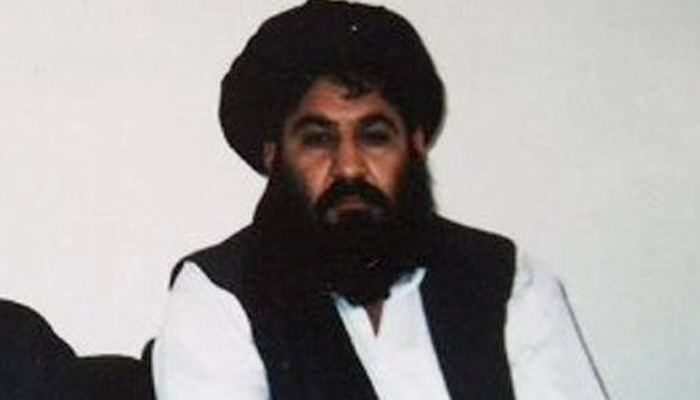 | ||
Allegiance MujahideenIslamic and National Revolution Movement of Afghanistan (1980's–1992)Hezb-e Islami Khalis (1980's–1992)Taliban (1995–present) Years of service 1985–19921995 – present Similar People Mohammed Omar, Sirajuddin Haqqani, Abdul Ghani Baradar, Abu Bakr al‑Baghdadi | ||
Afghan taliban name new leader akhtar mansour but peace talks delayed
Mullah Akhtar Mohammad Mansour (Pashto: اختر محمد منصور; /ɑːktɑː mɑːnsʊər/ or /æktɑː mænsʊər/; c. 1968 – 21 May 2016) was the Emir (leader) of the Taliban, an Islamic fundamentalist political movement in Afghanistan, from 29 July 2015 to 21 May 2016.
Contents
- Afghan taliban name new leader akhtar mansour but peace talks delayed
- Early life
- Soviet war and mujahideen era
- Islamic Emirate of Afghanistan
- Activity c August 2007 according to leaked material
- Quetta Shura and Taliban insurgency
- Leader of the Taliban
- Internal dissent
- Dissension
- Features of Mansoors leadership
- Communications
- Death and previous reports of injury
- Listed by the United Nations for sanctioning
- Residences
- Business interests
- Timeline
- References

On 21 May 2016, it was reported by a United States Department of Defense official that Mansour had been killed in a U.S. drone strike in Pakistan. The official, who was not sanctioned to speak publicly about the attack, said Mansour and a second militant were believed killed when a drone hit a vehicle in which they were riding. The strike was approved by U.S. President Barack Obama, who said at the time, he hoped Mansour's removal would lead to the Taliban joining a peace process. The death of Mansour was later officially confirmed separately by the Afghan government, members of the Taliban, and President Obama. On 25 May 2016, Hibatullah Akhundzada was promoted to the top position in the Taliban.

Early life
Mansoor is thought to have been born either in a village named Kariz or another village named Band-i-Taimoor (source: I.E.A.), both of which are situated within the Maiwand District of Kandahar Province in southern Afghanistan, sometime during the 1960s. The biography released by the Talibans' Islamic Emirate of Afghanistan website shows 1347 for his date of birth, which is according to the solar Hijri calendar, which corresponds to 1968. This year of birth is corroborated by S. Mehsud, of the C.T.C. West Point. According to Ahmed Rashid, Mansoor belonged to the Alizai tribe, but other sources claim that he was of the Ishaqzai tribe, in any case, both the Alizai and the Ishaqzai are of the Durrani line of the Pashtun people. Mullah Mansoor was educated at a village mosque and joined primary school at about the age of seven (source: I.E.A.).
Soviet war and mujahideen era

Sometime during the year 1985, he joined the jihadi war against the Soviet invasion of Afghanistan. This involvement included his participation within the Mohammad Nabi Mohammadi group. During the same time Mohammad Omar was a commander of an organization within Mohammad Nabi Mohammadi. Mansoor participated in the war ( jihad ) against members of the military of Russia, within Maiwand, Sang-e-Hessar, Zangawat and other parts of the city, and the Pashmul area of the Panjwai district, under the command of Mullah Mohammad Hassan Akhond, apparently commanded by him at least while fighting at the last location. During 1987 he was apparently injured (sustaining 13 separate wounds according to the I.E.A. source), while stationed at Sanzary area of Panjwai district in Kandahar. Known as one of the prominent warriors, Mansoor joined the Maulvi Obaidullah Ishaqzai group in 1987 but later Ishaqzai surrendered to Nur ul-Haq Ulumi, now the interior minister. Soon afterwards, he migrated to Quetta.
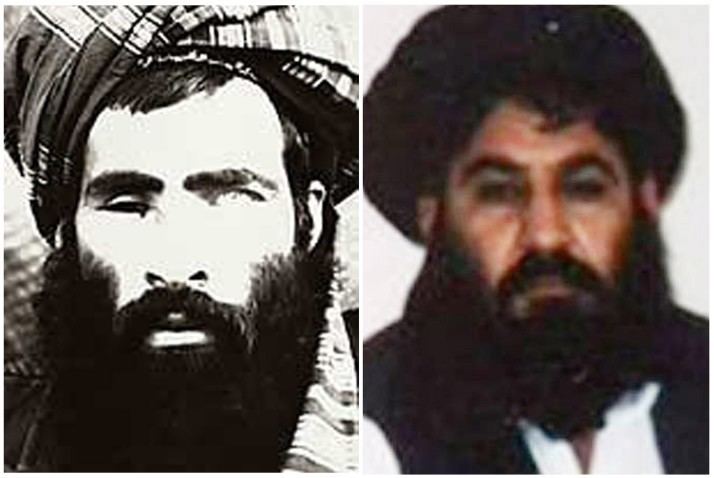
After the war, Mansoor resumed his religious education in different seminaries and later shifted to Peshawar where he joined Jamia Mohammadia at the Jalozai Refugee camp. He was a student at Darul Uloom Haqqania madrassa, which is where Mohammed Omar also studied. He was apparently a popular student, during his time at the madrassa from 1994 to 1995, located within the Jalozai refugee camp for Afghans near Peshawar, Pakistan, according to Afghan journalist Sami Yousafzai, who met him during that time.
Islamic Emirate of Afghanistan
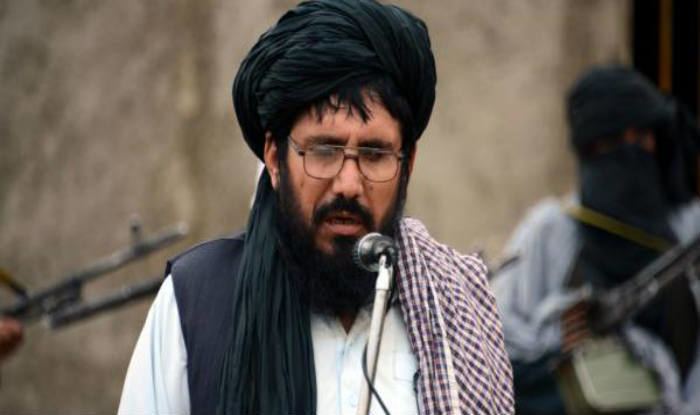
After the capture of Kandahar airport he was appointed as director general, or otherwise termed, security officer in charge, of the Kandahar airport, a role which encompassed both the air force and air-defence systems of Kandahar. After the taking of Kabul during the 1996 he was made director of Ariana airlines, and additionally Minister of the Emirate for aviation and tourism, by Mohammed Omar, within the Talebani Islamic Emirate of Afghanistan, together with his overseeing the Emirates' air force and air-defence systems, from his additional appointment as head of these within the ministry of defence. Notably, while minister, Mullah Mansoor organized a 24-hour flights services within Afghanistan, thereby organizing the provision of facilities for Muslims to go to Mecca as Hajj via air-flight. During 1996 the Mullah appointed the individual Farid Ahmed to station manager of Ariana airlines.
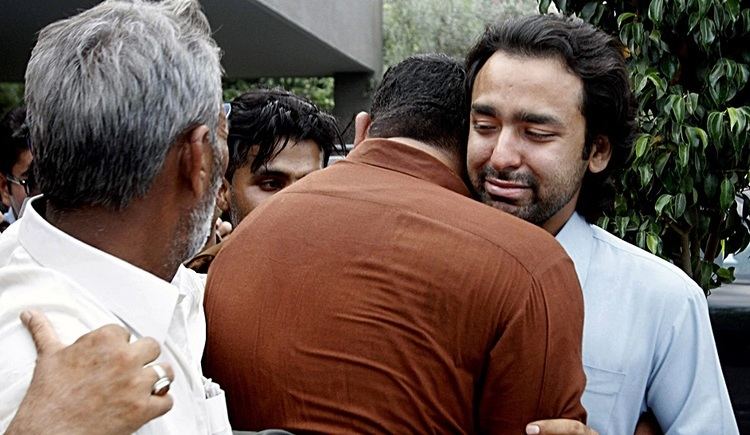
During 1997, when the Taliban tried unsuccessfully to capture the northern city of Mazar-e-Sharif, Mansoor was captured by an Uzbek warlord. For two months he remained there as a prisoner of war before Mohammed Omar traded him out.
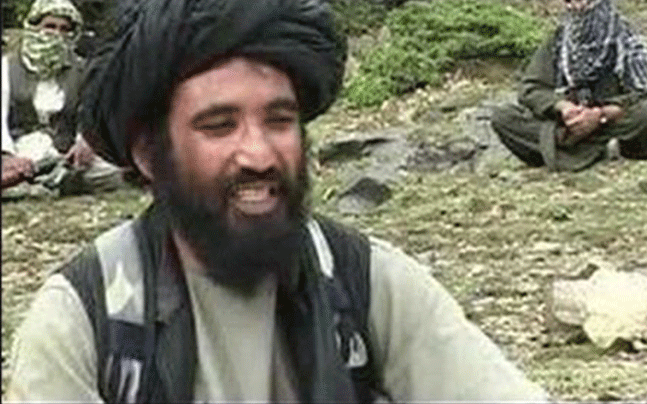
During 1998, the Mullah visited amongst other places within the area, Frankfurt, and Prague of the Czech Republic, for a period of 25 days, as part of his visit to the unofficial envoy to Europe at the time, Mullah Nek Muhammad:
He came to Germany to purchase airport equipment, parts for airliners and military choppers for the Taliban air force
After the conclusion of the hijacking of Indian Airlines Flight 814, Akther Masour is reported, by Anand Arni, a former officer with the Indian organisation Research & Analysis Wing, as being seen embracing Maulana Masood Azhar, the then leader of Jaish-e-Mohammed.
In 2001, he surrendered to the Afghan President Hamid Karzai to ask for amnesty. He was forgiven after which he returned to his home district. American forces however refusing to believe he and other senior Taliban commanders had given up fighting, conducted a series of night raids to capture him after which he fled to Pakistan, where he helped to shape the Taliban as an insurgent organisation.
Mullah Mansour was appointed as shadow governor of Kandahar, from sometime after 2001, until May 2007.
In a previously secret state communication of the U.S. government in 2006, Akhtar Mansoor was listed as the 23rd member of the Taliban (with the late Mohammed Omar as the first member).
Activity c. August 2007, according to leaked material
Mansour attended a meeting dated 24 August 2007 with other senior Taliban officials, so that he and those others present might discuss and organize a potential suicide bombing and bombing campaign upon the areas of Kandahar and the Helmand Province, and also particularly focused on killing Ahmad Wali Karzai and Hamid Karzai.
Quetta Shura and Taliban insurgency
The council of the Taliban appointed him as deputy to the newly appointed Mullah Abdul Ghani Baradar during 2007, the Indian Express reported Akthar Mansour as appointed to the Taliban's Quetta Shura (council for political and military matters and affairs), sometime during 2007, while within Quetta. One source gives Mansoor as being appointed deputy to Mohammed Omar during 2010; another source states him to have been "by some accounts" the second most senior member of the Taliban behind Mohammed Omar, during 2010. A contradictory report states his appointment occurred during 2013 after Abdul Ghani Baradar, the then deputy, was jailed. A source claims to know of Akther Mansour having a "direct influence" over military units operating within Khost, Paktia and Paktika, at a time after his appointment to the Council of the Taliban.
Wahid Muzhda is quoted as saying, in reference to Akther Mansoor:
"in 2013 he convinced other Taliban leaders to open the group's political office in Qatar to initiate negotiations with the West."
a fact which is corroborated by an additional report, which states the office was within Doha, Qatar.
According to a 2014 report, Akther Mansoor, together with Abdul Qayum Zakir and Gul Agha Ishakzai, were stated to be involved in fighting over control of a major opium-producing area (land of Maiwand District) against a co-founder of the Taliban movement, Abdul Ghani Baradar.
An article, published 12 March 2015, stated Mullah Mansour and Abdul Qayum Zakir, who were long-term rivals, had met together in order to find an agreement and at the meeting had slaughtered sheep for the purposes of a feast. The article stated Mansour was in favour of initiating so-called talks with Afghani government officials at the time, but was unable to make any progress in his own direction due to Zakir being opposed to the opening of a dialogue with the Afghan government.
According to one report, dated 17 March 2015, Mullah Masoor was at that time deputy amir ul-momenin, military leader and head of the shura of Quetta.
Mansour wrote a letter to Abu Bakr al-Baghdadi, on behalf of the Islamic Emirate of Afghanistan, released on June 16, 2015, in order to express his concerns of the potential for a negative influence of ISIS upon Afghan Talibans' progress, since ISIS activities might pose a risk of causing "multiplicity" within forces of the jihad of Afghanistan. The letter, appealing to the unity of "religious brotherhood", requests al-Baghdadi might extend "goodwill" to the Taliban, which "doesn't want to see interference in its affairs". The letter was written in the Pashto language, and released within the Voice of Jihad site.
Additionally, the letter shows Mansour considered the late (Sheikhs) Abdullah Azzam and Osama bin Laden, the late Abu Musab al Zarqawi and Ibn al-Khattab, to be heroes. In addition the letter expresses recognition of the support to the Islamic Emirate of Afghanistan, of "famous religious scholars", of these he provides (Sheikh) Hamud bin Uqla al Shuaybi as an example.
Leader of the Taliban
Akhtar Mansour was elected leader of the Taliban organisation on 29 July 2015. The results were announced on Thursday 30 July.
Internal dissent
The Taliban splinter group Fidai Mahaz claimed Mohammed Omar was assassinated in a coup led by Akhtar Mansour and Gul Agha. Taliban commander Mansoor Dadullah, brother of former senior commander Dadullah, also claimed that Omar had been assassinated. Mullah Yaqoob, Omar's eldest son, denied that his father had been killed, insisting that he died of natural causes. A Ṭālibān communique published 30 July 2015 stated Mullah Omar had died within hospital.
Mullah Mansoor is said to have "closely kept the secret that Mullah Omar had been dead" despite the (leaking) of a report of Omar's death in 2013.
Dissension
Some Taliban sources considered Mansour's selection as leader to be invalid, while other senior Ṭālibān commanders and officials preferred Mohammed Omar's eldest son, Mohammad Yaqoob, to have ascended as leader. Yaqoob was said to have been supported by his uncle, Abdul Manan and former Taliban military chief Abdul Qayyum Zakir. The head of the Talibans' political office in Qatar, Tayyab Agha also opposed the selection of Mansour as leader. However, a statement allegedly from Zakir denied he had any conflict with Mansour. Yaqoob is known to have publicly rejected the appointment of Akhtar Mansoor.
Features of Mansoor's leadership
Mansoor announced one of his deputies to be Sirajuddin Haqqani.
The Mullah is thought to have had dealings of some kind with the Pakistani Inter-Services Intelligence organisation.
On 13 August 2015, al-Qaeda's media wing As-Sahab issued a pledge of allegiance from Ayman al-Zawahiri to Akhtar Mansour.
Sometime within August, Mullah Mansoor sent a delegation to meetings with officials of the Afghan government, which was subsequently "hailed as a breakthrough".
A Security Council report, dated to the immediate September after Mansours' inauguration, showed he, as the new leader, was unwilling to engage in negotiations for the purposes of assuring peace.
The Brookings Institution reported the Mullah referred to his own leadership as Commander of the faithful, a translation of Amir al-Mu'minin. A separate source states the Mullah used this particular title to refer to his role as leader of jihad. The Mullah was, according to RAND corporation, and elsewhere, leading a jihad (i.e. an insurgent force) limited to concerns orientated only to within Afghanistan, and not elsewhere.
Communications
In a communication reported within the Islam Times (and elsewhere) published 22 September 2015 (Eid al-Adha), the Mullah stated (excerpt of communication):
According to a report published on 5 November 2015, the Mullah stated his opinion that modern education was a "necessity".
Akther Mansoor released his first communication as leader of the Taliban on 1 August 2015 as part of a 30-minute (or 33-minute, according to Al Jazeera) video release:
... We should all work to preserve unity, division in our ranks will only please our enemies, and cause further problems for us ...Our goal and slogan is to implement sharia and an Islamic system, and our jihad will continue until this is done ...
The Mullah stated his position with regards to peace talks; the suggestion of his being willing to engage in peace talks as "enemy propaganda".
The website of the Islamic Emirate of Afghanistan published a biography of Mullah A.M. Mansoor on the occasion of his becoming Emir.
Death and previous reports of injury
There were unconfirmed reports that Mullah Mansour was shot and wounded during a confrontation with other senior Taliban members inside a house on the outskirts of Quetta in Pakistan on 2 December 2015. Reports published in the following days claimed that Mansoor had died of his injuries. Sources for these reports included Taliban leaders and Afghan governmental officials, Afghanistan Vice President General Abdul Rashid Dostum was named by one media organization as a source, although the Afghan government is known to have previously released statements which later proved to be untrue. Members of the Taliban, including Zabihullah Mujahid, dismissed the reports, with claims they were falsification by their enemies. A report published 5 December, written by Jawad R Awan for The Nation magazine, reported that a statement was released by Latif Mansoor, personal aide to the Emir, which said that Mullah Mansoor was unwilling to comment on his status.
The U.S. military conducted an airstrike against Mansoor on 21 May 2016, near the Pakistan–Afghanistan border. A U.S. military official said that he along with another militant were thought to have been killed in the airstrike. U.S. President Barack Obama confirmed on Monday, 23 May 2016, that Mansour had been killed in the American airstrike which he had sanctioned. The claim of his death was backed up by confirmation from Afghan officials and Taliban members. U.S. Secretary of State John Kerry told a press conference: "Yesterday, the United States conducted a precision airstrike that targeted Taliban leader Mullah Mansour in a remote area of the Afghanistan-Pakistan border. Mansour posed a continuing, imminent threat" to U.S. personnel and Afghans. Kerry also declared that the leaders of both Pakistan and Afghanistan were made aware of the airstrike but he refused to elaborate on the timing of the notifications, which he said included a telephone call from him to Pakistani Prime Minister Nawaz Sharif. A U.S. State Department spokesperson claimed that "I don’t have any more clarity of where the actual strike took place. What I can say is that it was in that border region. I just can’t say on which side of the border it was.” According to the Wall Street Journal, the strike took place on the N-40 National Highway as Mansour was being driven by taxi from the Iranian border to Quetta, after a "lengthy" stay in Iran. Later reports placed the missile strike close to the town of Ahmad Wal. The U.S. government agencies involved reportedly agreed that officials were to be vague about identifying the location of the strike, beyond saying it took place along the Afghanistan-Pakistan border. A passport found at the scene belonged to a Pakistani resident of Balochistan named Wali Mohammad. This may have a pseudonym Mansour was using in Pakistan.
According to the International Institute for Counter-Terrorism, U.S. officials stated that Mullah Mansour's death was "unavoidable" due to the then Emir being unwilling to engage in peace talks.
He was succeeded by Mawlawi Haibatullah Akhundzada.
Listed by the United Nations for sanctioning
In a communique published 29 November 2011, the Mullah was identified with the reference number TI.M.11.01. as an individual associated with the Taliban and accordingly was made pursuant to sanctions, as of 25 January 2001, and those sanctioned were to have any available assets frozen, to be banned from traveling and to be subject to an arms embargo.
Residences
Mullah Mansoor apparently had a home within Quetta, which is under the protection of Pakistan's Inter-Services Intelligence agency, and another residence located in Dubai.
Business interests
Mansour is alleged to have owned a cell-phone company, among other investments, and is claimed to have been wealthy as a result of his profiting from the dealings of Ishaqzai drug dealers. According to Richard Spencer of The Telegraph, Mansour performed his business operations via a residence located in Dubai.
Timeline
The following is a list of reported information:
